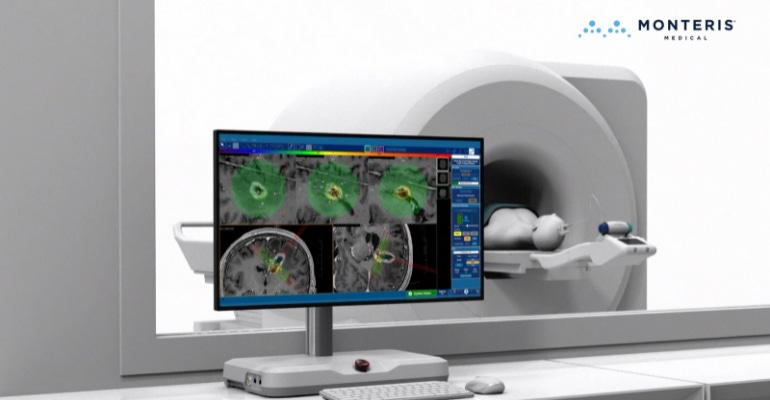This Surgical Alternative for Recurrent Brain Tumors Is LITT
Post-market data shows laser interstitial thermal therapy (LITT) using Monteris Medical's NeuroBlate System offers an effective alternative to traditional surgery for patients with newly diagnosed and recurrent glioblastoma, a fast-growing and aggressive type of brain tumor.
June 3, 2022

Data on 89 patients collected through the LAANTERN prospective, multicenter registry demonstrated that laser interstitial thermal therapy (LITT) offers an effective alternative to traditional surgery for patients with newly diagnosed and recurrent glioblastoma, while also delivering the benefits of a minimally invasive surgical procedure, including short recovery time and reduced potential for side effects, Monteris Medical recently revealed. These results have been published in the journal, Neuro- Oncology Advances.
The study demonstrated that for newly diagnosed patients treated with LITT, followed by standard-of-care chemotherapy and radiation, overall survival rates (16.14 months) and progression-free survival rates (11.93 months) are comparable to published outcomes where traditional surgery was used. For patients with recurrent disease, no standard of care is currently established; however, the LAANTERN study showed median post-LITT survival of nearly nine months, compared with the range of 5-13 months observed for traditional surgery. In addition, the functional status of patients stabilized or improved at one month post-LITT, the company said.
Isocitrate dehydrogenase (IDH), a genetic mutation, wild-type glioblastomas require immediate intervention, as the median survival overall survival rate for glioblastoma is estimated at 15-18 months. Fewer than 10% of patients are alive at five years. Other molecularly defined gliomas may be less prevalent than IDH wild-type, but they are known to have longer survival rates, so the company said it is important to stratify research by subtype and molecular characteristics to control for the variability in survival rates across all glioma types.
The Monteris NeuroBlate System is designed to enable a robotic interface for the precise and safe delivery of laser energy. The neurosurgical tool ablates intracranial soft tissue, including brain structures such as brain tumors, radiation necrosis, and epileptic foci (as identified by noninvasive and invasive neurodiagnostic testing, including imaging).

"For patients with glioblastoma, treatment options are limited, especially for those with recurrent disease," said John de Groot, MD, lead author of the paper and division chief of neuro-oncology at the University of California San Francisco Weill Institute for Neurosciences. “These data clearly demonstrate that LITT remains a critical tool for achieving maximal safe cytoreduction of the tumor and is especially effective when followed by chemotherapy and radiation. The minimally invasive nature of LITT, short recovery, and favorable side effect profile make LITT a safe and effective option.”
About the Author(s)
You May Also Like



.png?width=300&auto=webp&quality=80&disable=upscale)
